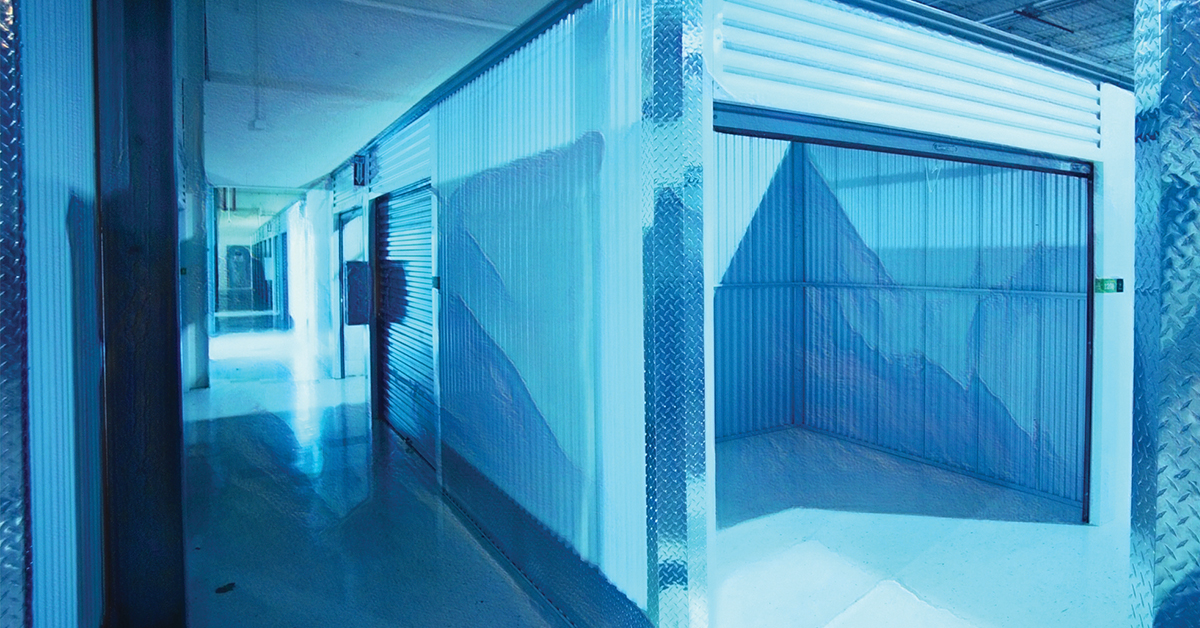Modern climate-controlled facilities play an ever-greater role in the nation’s supply chain. America’s food processing, pharmaceutical and cold storage warehousing infrastructure continues to grow with a larger emphasis on just-in-time logistics and last-mile delivery.
Brokers seeking financing for these projects, which can include new construction, retrofits, expansions and facility upgrades, are tasked with understanding the nuances of this type of project. They need to ensure these complex undertakings meet market demands and are financially viable. Surprise delays and cost overruns are common, but most of these hurdles can be avoided by carefully vetting and selecting the right partners to deliver a high-quality product safely and efficiently, on time and on budget.
Increasing demand
The need for fresh, safe and convenient foods in the grocery store industry is driving the demand for climate-controlled infrastructure. In addition, specialty verticals — everything from fresh flowers to pet products and pharmaceuticals — also require controlled environments. To meet consumer demands, food suppliers and retailers are expanding and upgrading their manufacturing and distribution channels, especially in the cold storage arena.
Cold storage facilities are designed to keep foods, pharmaceuticals, florals and chemicals either deep frozen, frozen, refrigerated or at a fixed temperature, ranging between negative 20 degrees to 60 degrees Fahrenheit. The projects can range from a few thousand square feet to a few million. Climate-controlled facilities are a broader category, denoting any structure with a user-controlled HVAC system to provide heating and cooling for user comfort.
Cold storage industrial projects are very sophisticated and complex structures. While proven industry best practices apply to all cold storage projects, each individual new construction, retrofit, expansion or upgrade has a long list of unique variables to address, from the earliest planning stages through delivery to the building owner or lessor. Unexpected twists and turns are the last things brokers and construction project financers want to experience in the cold storage development process.
Experience matters
These projects mandate that construction partners be well-versed in the entire development arc from site selection through estimation, procurement and construction specific to the product type. Misunderstandings and missed details can result in cost overruns, project delays, system failures and litigation.
Construction partners and equipment providers must work as one team to ensure sites are planned, designed and built to exact specifications to guarantee optimum performance. It is their job as consultants and partners to provide clear, concise and actionable information to investors.
When comparing bids, estimated price per pallet position (or per-square-foot if the buyer chooses to analyze it that way) should not be the primary deciding factor in the consideration set. It is also not prudent to line-item and bargain shop estimates for plumbing, roofing, HVAC and other crucial aspects of construction. Keeping a project on time, with no compromises to construction quality or workplace safety, will impact the bottom line much more than picking the lowest line-item estimates that are subject to change. A reputable service provider will be more interested in cultivating a long-term relationship that will continue for many more projects, versus underbidding a single job to win the work before piling on surprise charges, delays, and headaches.
Development process
Expectation management is central to financing cold storage facilities. A recent article in Plant Engineering magazine said that a cold storage warehouse costs three to four times more than a basic dry facility. Such projects also take longer to build because construction is more complicated and requires a rigorous preconstruction process. On the bright side, demand for these structures and their profitability potential make them a solid strategic investment.
Variable costs applicable to both cold and dry storage construction will affect climate-controlled facility bids. Some variables due to the complexities of refrigerated facilities include the need for insulated metal paneling, as well as specialized mechanical, refrigeration and rooftop HVAC equipment. There also may be a premium concrete slab, subfloor heating, and advanced fire suppression and equipment vibration control throughout the facility.
Thermal envelopes at the heart of cold storage structures are custom-built ecosystems designed to create and maintain specific environmental conditions. Compressors, condensers, insulation, ducting, piping, flooring, ventilation, air circulation, roofing, racking, lift and conveyor systems all must work in harmony to deliver the desired results. Built-in automation and artificial intelligence breakthroughs can help managers and operators keep these facilities in peak performance year-round.
Cold storage must be designed to weather climate extremes, deflecting sun and heat during the summer when energy grids are often stressed and managing heavy snow and deep freezes to keep facilities operational during severe winter events. The proper roof color can impact surface temperature in variances of up to 65 degrees.
The better a roof deflects heat through color, substrates and insulation, the better the structure below can maintain optimal temperature. Even the slightest structural breach, due to a crack in the roof, failed fasteners or insulation gaps can cause warm, humid air to enter the thermal envelope. Humidity and vapor management is a crucial part of the design and construction process. It will limit condensation, frost and icing, which in excess can lead to serious performance, site safety and operational efficiency issues.
Price variables
Prices will vary by region and can be impacted by general contractor and subcontractor availability, inflation and the current market prices for goods. Other cost variables include state and local taxes, as well as compliance and zoning nuances specific to the region or even local land parcels.
Weather conditions also play a major role in pricing, as some regions have fewer viable building days per year based on extreme cold, heat, precipitation or wind. Proven best practices can greatly reduce costs. For instance, intelligent design places temperature zones, cargo doors and loading docks in precise locations to ease workflow and increase efficiency.
For build-to-suit customers, project planners must analyze the current and planned business model so the facility can meet the specific needs of the owner and its intended purpose now and long into the future. Speculative projects must be flexible enough to adapt to a variety of potential tenants.
Facilities require meticulous planning to align to the types of products facility owners or tenants plan to manufacture, warehouse and-or distribute. Product volume, unit size and weight, temperature sensitivity and volatility will all impact the placement of the equipment required to keep the facility working as intended.
Special needs
Each type of project has its own requirements. Food facilities, for instance, need to be able to rotate frozen and refrigerated stock. The product must also be moved from storage to loading docks, and finally into refrigerated or freezer trucks as quickly and efficiently as possible to avoid spoilage. Other types of fresh food meal kits must be packaged as closely to consumers as possible, necessitating the need for refrigerated and frozen food processing and distribution hubs to supply multiple retailers in each metropolitan area.
Mixed-use facilities — those with a combination of frozen, refrigerated, heated and room temperature storage zones — require designs, insulation and ventilation to prevent condensation, frost or even snow from building up. Worker safety and comfort must be accounted for in the facility design. Planners will even need to account for how many employees will be in refrigerated or frozen sections of the facility during peak and off-peak hours.
Construction partners must be experts in fire safety and prevention. They need to know government food regulations and other industry-specific compliance requirements, and they must understand zoning, permitting and entitlements specific to the city and region where the project is planned.
Identifying potential red flags and the concerns of approval boards are essential steps to avoid preventable cost delays in the project, even at the earliest stages. Professionally prepared conceptual designs and supporting technical and environmental studies can inform these discussions. If the site has been previously developed, it is imperative to have a brownfield-to-greenfield strategy ready in case there is contamination on the site. There should also be resources in place to ensure safety from project construction through operation.
● ● ●
The need for cold storage continues to rise, necessitating the ability of lenders to analyze and fund viable projects. By understanding the nuances of climate-controlled projects, asking the right questions and having seasoned partners at the table throughout the process, brokers and their clients can ensure financially prudent, yet well-informed decisions are made throughout a project. ●
Author
-

Cory Singer is vice president of business development and pre-construction for FCL Builders Inc. As the head of national business development, Singer leads the company’s identification and expansion into new markets, geographic regions and customer growth opportunities. Since joining FCL in 2011, Singer has been instrumental in growing the company’s footprint from a single office to a national brand, spanning five regions and including 11 offices, serving clients coast to coast.
View all posts







